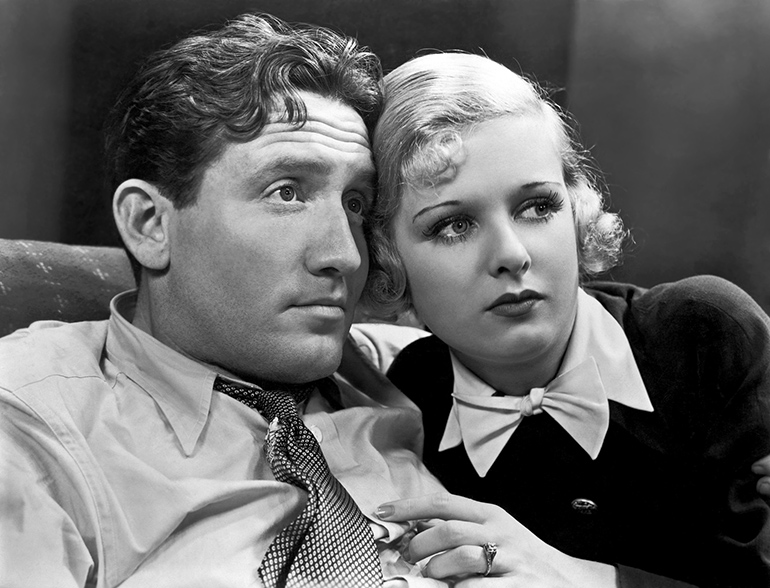INTRODUCTION TO 'WHITE ELEPHANT ART VS. TERMITE ART AND OTHER WRITINGS ON FILM'1
José Luis Guarner
 FORWARD
FORWARD
 DOWNLOAD
DOWNLOAD

Richard Shickel, one of the most perspicacious North American critics, said about Manny Farber: ‘He is the father of all of us.’ Another of his colleagues, Dwight Macdonald, declares for his part: ‘Manny Farber is an impossibly eccentric movie critic whose salvoes have a disturbing tendency to land on target. I often disagree with him but I always learn from him.’
In the twofold aspects that they show of our character, I believe both testimonies, constitute an excellent presentation of Manny Farber. Because even though the texts here compiled do not need a presentation, I consider convenient to warn that their author do not respond to the image of the eminent critic, not at least as it was understood when the cinematographic culture was a European prerogative – we Spanish cinephiles are European, whether we like it or not– and was imbibed from such noble editions as Cahiers du Cinéma, Positif, Cinema Nuovo, Bianco e Nero or Sight and Sound; all of them so respectable nowadays –and almost as penetrated by wisdom— as La revista de Occidente. No, Farber is rather a dilettante, a man of exquisite taste that gets excited by cinema and who enormously enjoys watching films. And, as it usually happens with the authentic dilettanti, he is at the same time a sniper whose raids causes irreparable ravages to the common places and the established reputations.
Born in Arizona, but a New Yorker by heart, painter, art critic and teacher in San Diego, California, Farber writes about film since the beginning of the decade of the forties. His writings are scattered in limited circulation, if not non-existent magazines in Europe: Commentary, Cavalier, The New Republic, The Nation, New Leader, Perspectives, Artforum, and the best known Film Culture. Out of them, ten works that allow to trace what the strategist would call the Farber Line, written between 1952 and 1969, have been selected. Therein is revealed that more than twenty years ago –when almost no critic, except for Andre Bazin, worked on this sense—, Farber already knew well that the story of a movie is not in the plot, but in a face, a gesture, a set of forms; In other words, he is capable of appreciating a cinematographic work in terms of its structure: space, form, texture. Led by both an impertinent and rigorous logic, this appreciation is formulated through a very personal prose, twisting, free, precise as a metronome, of a happily glacial humour and almost as sharp as a Samurai’s sabre, that unceasingly bursts –probably fruit of his experience as a painter– into a particular architecture of visual metaphors. To preserve, not only his line of thought but that uncommon verbal style, has been my constant concern while taking this version in charge, which I hope does not betrays too much the original brilliance. As if it were not enough, Farber, dangerous precursor, was also the first to write coherently about North American cinema (and not the enthusiast boys from Cahiers du Cinéma, as we imagined): He was the first to attack Hollywood’s sacred cows, Oscars collectors, by denouncing their procedures – The Gimp, that is still being used without any mercy today, and that should be as a term as popular as the Camp and the Kitsch—; He was the first to highlight the qualities of American B movies, for which he coined the concept of underground, later vulgarized to describe other movies of a very different nature; he was the first, in fact, to describe prophetically the aspects that, from the 1940’s, have conditioned the fatal decline of Hollywood cinema, a victim of Transcendence and Artistic Pretensions, of the White Elephant Art in one word, to use the very peculiar Farbarian terminology. Addressed to American or European cinema, his observations are always sharp, eased -Of an admiring easiness towards such renowned values as Godard, Hawks, Buñuel, and others I forget, and that I fear will give goose pump to more than one cinephile, lovers of respect and status- as well as amusingly intelligent, without thereby falling into pedantry and into the doctoral dissertation that seems to please so many supposedly distinguished critics. His writings allow to discover today, with surprise, that the U.S, always distinguished for their production of prolific filmmakers, have produced a critic as well, whose thoughts do not consist on the common collection of clichés and half-truths, but that arise a constant provocation, an inexhaustible incitement to sharpness. I hope this surprise results as delightful to the reader, as it has been to me.
Nº 4 MANNY FARBER: SYSTEMS OF MOVEMENT
Editorial
Gonzalo de Lucas
FILMS UNDER DISCUSSION. INTERVIEW
The Law of the Frame
Jean-Pierre Gorin & Kent Jones
DOCUMENTS. 4 ARTICLES BY FARBER
The Gimp
Manny Farber
Ozu's Films
Manny Farber
Rainer Werner Fassbinder
Manny Farber & Patricia Patterson
Nearer My Agee to Thee (1965)
Manny Farber
DOCUMENTS. INTRODUCTIONS TO MANNY FARBER
Introduction to 'White Elephant Art vs. Termite Art and Other Writings on Film'
José Luis Guarner
Termite Makes Right. The Subterranean Criticism of Manny Farber
Jim Hoberman
Preface to 'Negative Space'
Robert Walsh
Other Roads, Other Tracks
Robert Polito
The Filmic Space According to Farber
Patrice Rollet
ARTICLES
Hybrid: Our Lives Together
Robert Walsh
The Dramaturgy of Presence
Albert Serra
The Kind Liar. Some Issues Around Film Criticism Based on the Case Farber/Agee/Schefer
Murielle Joudet
The Termites of Farber: The Image on the Limits of the Craft
Carolina Sourdis
Popcorn and Godard: The Film Criticism of Manny Farber
Andrew Dickos
REVIEW
Coral Cruz. Imágenes narradas. Cómo hacer visible lo invisible en un guión de cine.
Clara Roquet

